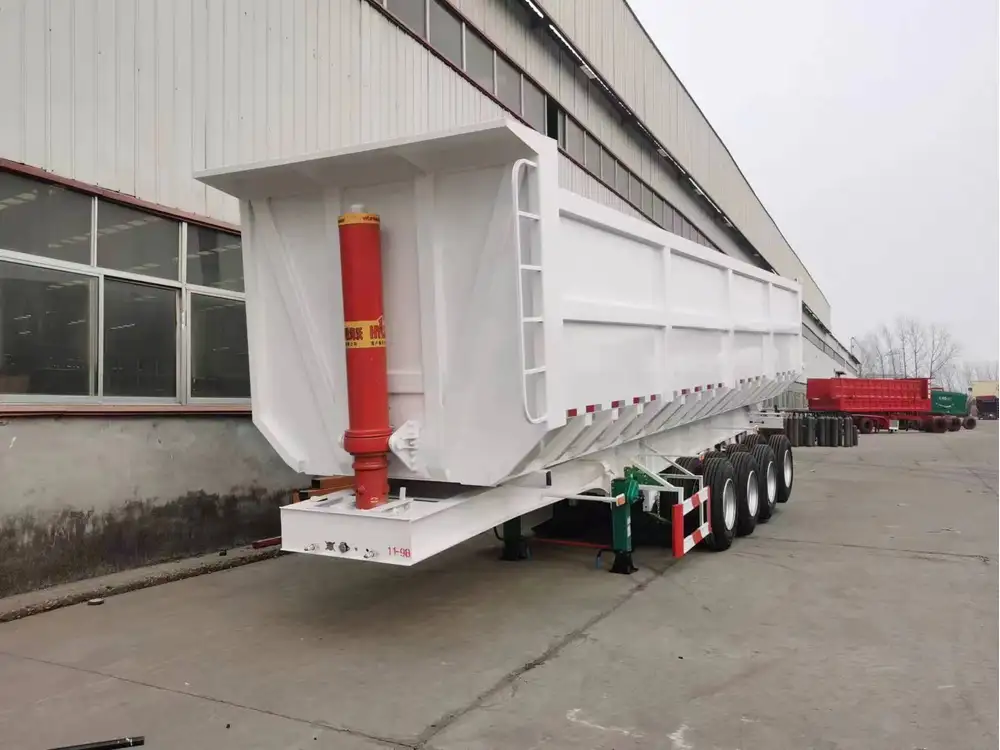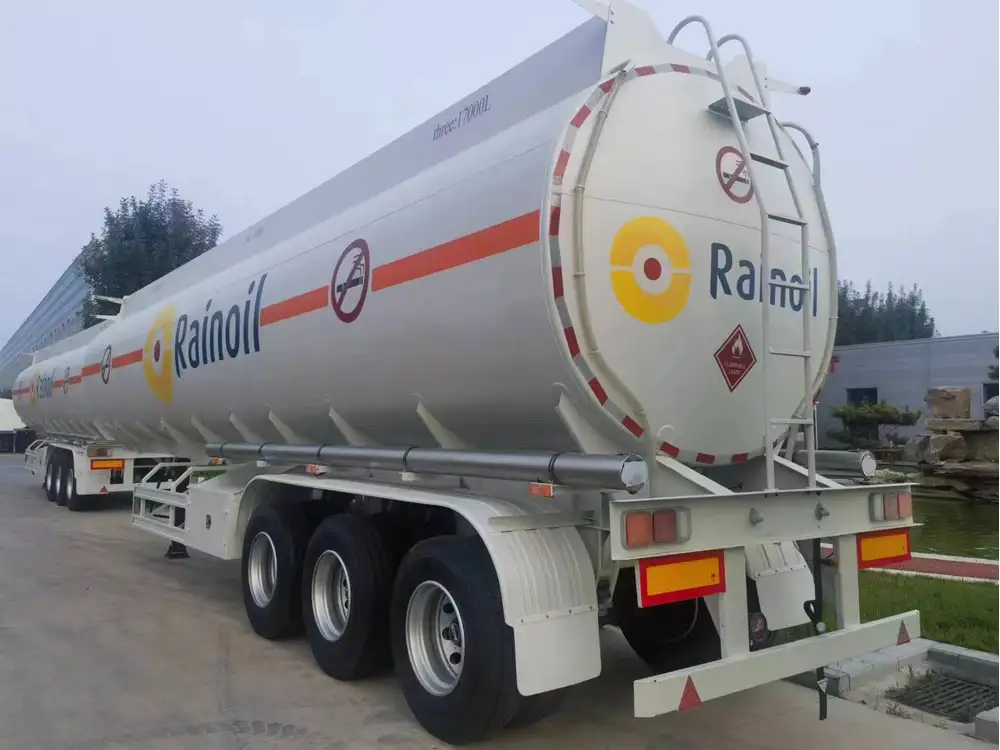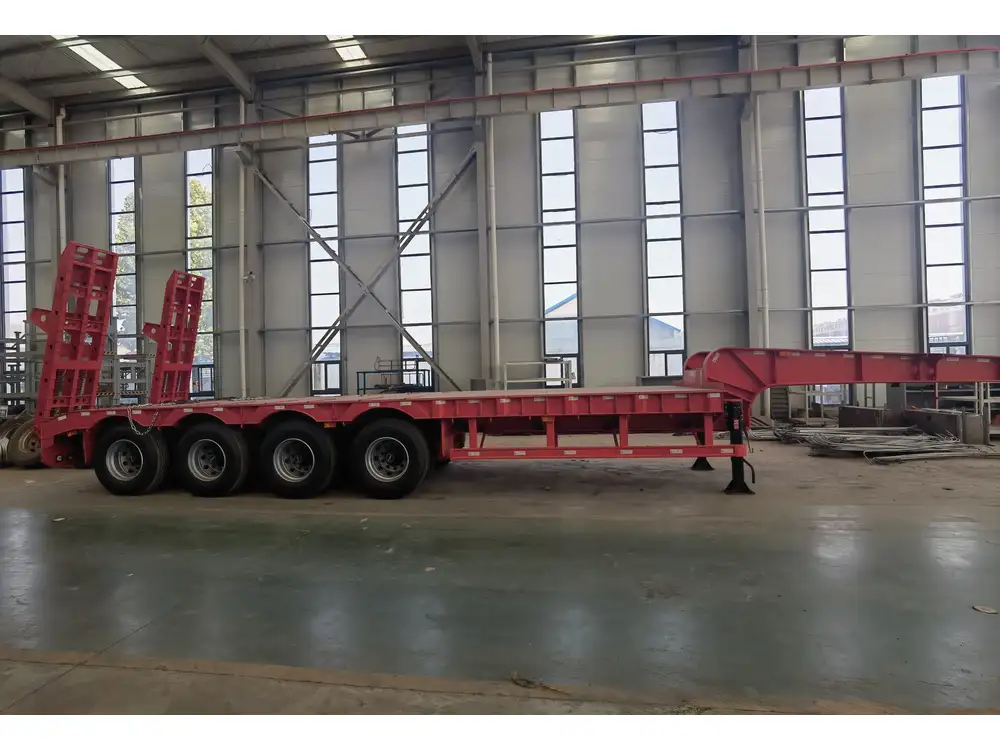Hauling gravel can be a strenuous and challenging task, especially without the right tools and knowledge. In this detailed guide, we will navigate the intricacies of transporting gravel using a flatbed trailer, ensuring a smooth, efficient, and safe operation. Whether you’re a seasoned contractor or a DIY enthusiast, understanding the best practices can make a significant difference in your workflow.
Understanding Flatbed Trailers
Types of Flatbed Trailers
Flatbed trailers come in various configurations, each designed for specific hauling needs. The most common types include:
| Type | Description | Ideal Use Case |
|---|---|---|
| Standard Flatbed | Basic flat surface with no sides; versatile for many loads. | General hauling, including gravel. |
| Drop Deck Trailer | Lower deck height for enhanced stability and clearance. | Hauling taller loads. |
| Extendable Flatbed | Can be extended for longer loads, providing flexibility. | When additional length is required. |
| Gooseneck Flatbed | Provides better maneuverability and stability for heavy loads. | Heavy-duty applications. |

Choosing the Right Flatbed Trailer
Selecting the appropriate trailer is crucial. Consider the following factors:
- Payload Capacity: Ensure your trailer can handle the weight of the gravel. Typically, gravel weighs approximately 1.5 tons per cubic yard.
- Trailer Dimensions: Does the trailer size fit your gravel load? Longer loads may require an extendable flatbed.
- Load Security Features: Check for tie-down points, side rails, and other security features to prevent shifting during transit.
Preparing for the Haul
1. Equipment Needed
Before you start hauling gravel, equip yourself with essential tools and equipment:
- Flatbed Trailer: Ensure it is appropriately rated for your load.
- Tie-Down Straps: Use high-strength straps to secure the gravel.
- Wheel Chocks: Prevent the trailer from rolling while loading/unloading.
- Shovels or a Bobcat: For loading gravel onto the trailer if needed.

2. Assessing Load Weight and Volume
Assess the gravel’s weight to avoid overloading:
- Calculate the volume you wish to haul. For instance, a standard flatbed can carry around 10 to 12 cubic yards comfortably.
- Multiply by the weight of gravel (1.5 tons per cubic yard). Ensure your truck and trailer can manage the total weight, including equipment.
3. Safety Precautions
Safety is paramount when hauling gravel:
- Check Local Regulations: Be aware of weight limits and road regulations in your area.
- Wear Safety Gear: Hard hats, gloves, and reflective vests can prevent accidents during loading and unloading.
Loading the Gravel

1. Optimal Loading Techniques
Loading is critical for a successful haul. Here are the steps:
- Position the Trailer: Park your flatbed trailer on level ground adjacent to the gravel pile.
- Load Evenly: Distribute the gravel evenly across the bed. Avoid loading all weight towards one side which can cause instability.
- Use a Bobcat or Loader: For large gravel volumes, utilize a loader to transfer gravel onto the trailer, ensuring an even distribution.
2. Securing the Load
To prevent movement during transportation:
- Use Tie-Down Straps: Secure the gravel with multiple wide straps, ensuring they are taut but not excessively tight.
- Add Sideboards: If your trailer allows it, consider installing removable sideboards to provide additional support.
3. Maintain Load Height
Ensure the load does not exceed the trailer’s sides:
- Load No Higher than Side Rails: This prevents gravel from spilling onto the roadway.
- Check State Regulations: Some areas have strict height limits.

During Transit
1. Driving Considerations
Driving with a loaded flatbed requires adjustments:
- Slow and Steady: Approach turns and hills slowly to maintain control.
- Check Brakes: Ensure your brakes are functioning effectively, accounting for the added weight.
- Increase Following Distance: Tail other drivers to allow for extended stopping time.
2. Regular Checks
Monitor the load while en route:
- Frequent Stops: Check the load security and integrity every 50 miles or so.
- Watch for Shifts: If you notice movement, pull over safely to adjust the load.

Unloading the Gravel
1. Safe Unloading Practices
When you reach your destination, follow these steps:
- Choose a Level Surface: Unload on flat ground to prevent rolling.
- Use a Bobcat or Grader: For large amounts of gravel, employ a loader for efficient unloading.
- Avoid Sudden Movements: Do not drop the load suddenly; control the unloading process.
2. Tools for Unloading
Consider the following tools to assist:
- Dump Trailer: If possible, use a dump trailer for quicker unloading.
- Skid Steer Loader: Ideal for distributing gravel precisely where needed.

Common Challenges and Solutions
1. Overloading the Trailer
Overloading can lead to accidents and fines. Prevent this by:
- Weighing Loads: Use a certified truck scale before leaving.
- Keeping Track of Volume: Know the weight limit of your trailer.
2. Gravel Spillage
Spillage can damage roads and pose hazards. Combat this by:
- Utilizing Proper Tie-Downs: Ensure all gravel is secured effectively.
- Installing Sideboards: Consider adding boards to contain loose material.

3. Vehicle Performance Issues
Heavy loads can strain your vehicle. Address this by:
- Inspecting Tires: Ensure proper inflation and look for damage or wear.
- Maintaining Your Vehicle: Regularly check brakes, alignment, and suspension to handle weight-bearing loads.
Conclusion
Hauling gravel on a flatbed trailer doesn’t have to be a complicated process. By understanding the nuances of flatbed trailers, loading techniques, and safety measures, we can make the task efficient and safe. Ensure you are properly equipped, know your trailer’s limits, and always prioritize safety to have a successful hauling experience.
By following this guide, you can effectively manage gravel hauling, avoid common pitfalls, and enhance your operational efficiency. As you embark on your next gravel haul, keep this comprehensive approach in mind for a smoother process from start to finish.



